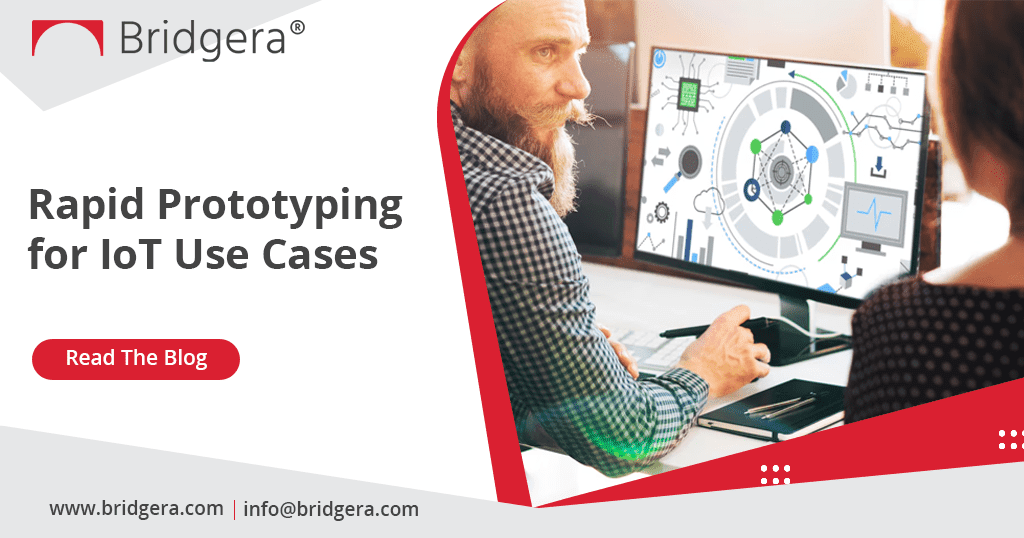You might have a brilliant Internet of Things (IoT) Use Case for your business, but prototyping is stalled because you lack a physical device or sensor to validate its feasibility. Building multiple prototypes for testing is expensive and time-consuming.
Bridgera offers an innovative solution – the Bridgera Digital Twin. This software acts as a virtual equivalent of an IoT device, eliminating the need for physical prototypes in the initial stages.
Benefits of Bridgera Digital Twin for Rapid IoT Prototyping:
- Reduced Cost and Time: Eliminate the high costs and long lead times associated with physical device development.
- Simplified Configuration: Easily configure the Digital Twin using an intuitive User Interface (UI) to match your specific communication protocol (TCP, UDP, MQTT, CoAP) and data structure.
- Data Flexibility: Generate realistic test data with customizable attributes to simulate various scenarios during prototyping.
- Alert and Notification Management: Set up thresholds to trigger alerts and notifications based on data values, enabling proactive problem identification.
- Seamless Integration: Integrate the Digital Twin seamlessly with Bridgera Monitoring, our comprehensive IoT Application Enablement Platform, for a complete solution.
Key Functionalities of Bridgera Digital Twin:
- Communication Protocol Selection: Choose the appropriate communication protocol (TCP, UDP, MQTT, CoAP) for your device.
- Data Packet (Payload) Structure Definition: Define all the data attributes (name, type, size) that the device will process.
- Command Configuration: Specify the commands the device will understand using data attributes and IFTTT logic constructs.
- Payload Generation Frequency: Set the frequency at which the Digital Twin will generate data packets.
- Random Data Generation: Utilize the Randomizer feature to simulate real-world sensor readings with user-defined frequency.
- Alert and Notification Triggers: Establish data value thresholds to trigger alarms, text messages, or email notifications.
Why Should You Settle for Bridgera?
Eliminate Physical Device Dependency: The lack of physical devices no longer needs to be an obstacle to your IoT progress.
- Rapid IoT Use Case Prototyping in 2 Weeks: Get your innovative ideas off the ground quickly and efficiently with Bridgera’s IoT Proof of Concept (PoC) process.
- Complete IoT Solution Development with Bridgera Monitoring: Combine the Digital Twin with Bridgera Monitoring, our IoT Platform, to develop a comprehensive solution for your IoT use case.
Bridgera: A Trustworthy IoT Development Company
Bridgera is a leading IoT development company specializing in rapid prototyping and development of IoT project. We offer a comprehensive suite of solutions, including the innovative Bridgera Digital Twin, to streamline your development process and expedite time to market.
Contact us today to discuss your specific needs and explore how Bridgera can help you with your IoT Development.
About Bridgera: Bridgera effortlessly combines innovation and expertise to deliver cutting-edge solutions using connected intelligence. We engineer experiences that go beyond expectations, equipping our clients with the tools they need to excel in an increasingly interconnected world. Since our establishment in 2015, Bridgera, headquartered in Raleigh, NC, has specialized in crafting and managing tailored SaaS solutions for web, mobile, and IoT applications across North America.
About Author: Gayatri Sriaadhibhatla is a seasoned writer with a diverse portfolio spanning multiple industries. Her passion for technology and a keen interest in emerging IoT trends drive her writing pursuits. Always eager to expand her knowledge, she is dedicated to delivering insightful content that informs the audience.
